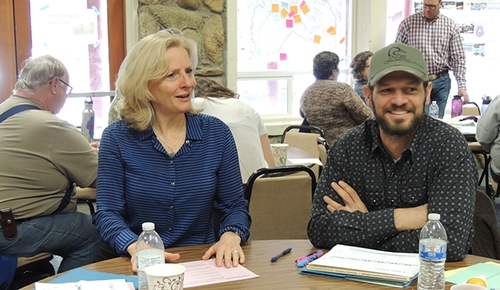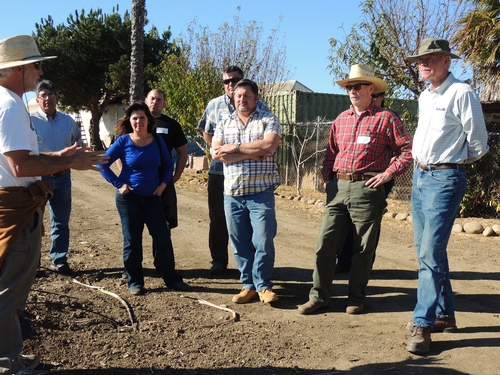
Posts Tagged: Mendocino
Agritourism Intensive 2021 classes start soon
Are you considering agritourism or nature tourism on your farm or ranch?
Would you like to expand your current agritourism or nature tourism business?
Agritourism Intensive 2021 classes are now open for registration by farmers, ranchers, agritourism operators and others involved in agritourism in the Central Coast (SLO) and North Coast (Mendocino) regions.
Learn more & Sign up today to save your space!
Due to COVID-19 restrictions, this year's classes will be mostly virtual, conducted via Zoom, with one in-person field day in each class series if allowed by health authorities. However, each class will be regionally-focused, participatory, and limited to participants from within the region.
- Local agritourism operators will share their own experiences and will be part of a supportive network of advisors as class participants plan and start new enterprises.
- Participants will learn from experts in business planning, regulatory compliance, risk management, hospitality and cost-effective marketing, including social media.
- The hands-on, interactive activities will guide participants as they assess their own farms or ranches for agritourism potential and start their own business, risk management and marketing plans.
- Each participant will receive by US mail a free copy of the extensive handbook, “Agritourism and Nature Tourism in California,” used as a text for the class.
San Luis Obispo class curriculum
SLO Registration:http://ucanr.edu/agtourslo
Mendocino Registration:http://ucanr.edu/agtourmendo
Important: The SLO region Agritourism Intensive classes is open only to farmers, ranchers and others involved in agritourism in San Luis Obispo, Monterey and Santa Barbara Counties.
SLO Class Format: 6 participatory 2-hour Zoom meetings, every Tuesday from January 12, 2021 to February 16, 2021, 9 a.m. to 11:00 a.m. (a possible in-person field day Jan. 26). Shared zoom participation will be available at the SLO Farm Bureau office for those with poor internet access.
SLO Registration: http://ucanr.edu/agtourslo
Important: The Mendocino region Agritourism Intensive class is open only to farmers, ranchers and others involved in or planning agritourism in Mendocino, Lake and Sonoma Counties.
Mendocino Class Format: 4 participatory 2-hour Zoom meetings, every Wednesday morning from March 3, 2021 through March 24, 2021, and one in-person field day on the site of a Mendocino County agritourism operation (location TBD) on March 31.
Mendocino Registration: http://ucanr.edu/agtourmendo
Workshop fee: $40 (for all class sessions, including class text mailed to you and lunch at on-farm field day session)
Information & scholarship options: Penny Leff, paleff@ucanr.edu, 530-902-9763 (cell)
This material is based upon work supported by USDA/NIFA under Award Number 2018-70027-28587.


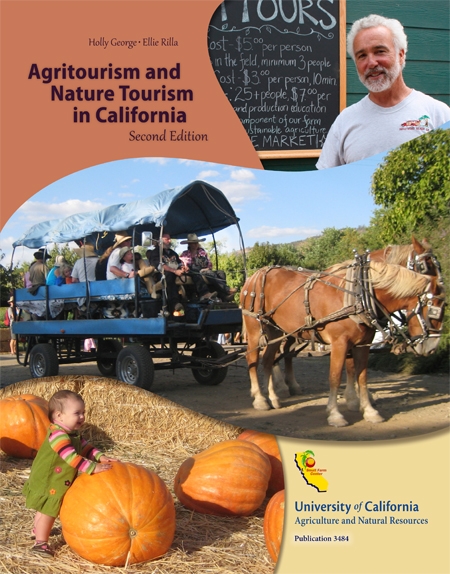
3484COV 2011
Mozilla information scientist finds her passion at UC Sheep Shearing School

“It's like a dance,” she says. “Once you have it right (and I mean, really have it), suddenly the whole method makes sense. You expend much less energy. You're controlling the sheep with your legs, which leaves your hands free, one to hold the shearing hand piece and the other to smooth out the skin so you don't nick the sheep.”
Since there are 400 ewes whose fleeces must be shorn before the hot summer months, that's important for her and her classmates.
The University of California Cooperative Extension Sheep Shearing School is the only program of its kind in California. It has been run in Mendocino County since at least 1990, but in 2009, it moved to the Hopland Research and Extension Center south of Ukiah.
Students are taught the New Zealand method of shearing, where the entire fleece is cut from the sheep as a single unit so it can be sorted and graded according to micron count. The method is designed to be comfortable for both shearer and sheep.
John Harper, UCCE natural resources advisor for Mendocino County, has been running this program for more than 20 years. Although these sheep weigh enough to make handling them a workout, he says that hip flexibility is more important than upper body strength. Since this is something women tend to have more of than men, they are often successful students.
More than 250 students from across the western U.S. as well as Canada and Mexico and have graduated from the program. Many come back year after year to practice under supervision, but also to connect with each other.
This year, a wool grading section was added to the course, taught by Ron Cole and Rodney Kott. Sheep have recently been bred much more for meat than wool in the region but there is a growing demand for high quality fleeces. The finest merino sheep do not do well in damp North Coast conditions but thrive in the dryer Central Valley and foothills, and there is a need for trained graders. Only 3 percent of California's 5 million pounds of wool is currently being processed within the state, and yet California remains a net importer of wool goods, while falling second only to Texas in sheep production. California fleeces are either composted or sent to China for processing, something another graduate of Shearing Class, Matt Gilbert, is keen to avoid.
“There used to be lots of mills in the U.S. to process our wool,” he said. “Now there are hardly any. That's why I wanted to start my own mill to process fine wool. We will be selling to handspinners and knitters and to commercial textile manufacturers. It's about trying to keep the product of this place in the region.”
Gilbert was inspired by the Fibershed movement started by Rebecca Burgess in 2010. Drawing on the locavore movement, Burgess committed to clothing herself for an entire year with textiles grown and produced within 200 miles of her house in Fairfax. The movement is gaining adherents across the country and beyond.
Wilkes says the Fibershed movement is what got her interested in learning to shear, too.
“Eight years ago, I walked into a yarn store in San Francisco and asked where the local yarn was. I knew California was a major producer of wool. I was told there wasn't any. I was curious about why, and became involved with Fibershed and attended their first symposium in October 2012. During a panel involving shearers [one of whom was Matt Gilbert], I found out that small flock owners had a hard time finding people to shear their sheep. That got me thinking that I could learn to do the work," Wilkes said.
The UC certificate really means something to ranchers and farmers. As a woman who provided a Shearing School scholarship put it recently, “When I see UC Certification, I know I'm not going to have butchered animals.”
Harper explains that the North Coast sheep herding trends have changed over time – from large producers to smaller flocks – but now there is a move back to some larger flocks, driven in part by the Vines and Ovines project established in Mendocino County by UCCE advisor Morgan Doran with help from UCCE advisor Roger Ingram of Placer and Nevada counties, UCCE advisor Stephanie Larson of Sonoma County and UCCE specialist emeritus Mel George. The sheep were subjected to aversion training so they would not eat grape leaves. Now they browse through vineyards, conducting weed control and fertilization without harming the vines. One vintner, Clay Shannon, has 1,500 ewes. He pairs premium lamb with his wines in sales to niche markets. The idea is catching on.
Meanwhile, Wilkes is shearing sheep across Northern California on weekends or before work.
“I can't express how much Shearing School means to me and to California,” she says. “There's almost no way to break into agriculture if you didn't inherit land here. I found my calling late ... I love developing open source software and working on information privacy, but shearing is my passion. Shearing School is one of the few feasible avenues into agriculture in the state.”


Wool classing.

Stephany Wilkes at the Sonoma County Fair.
A 'spectacular' year for Mendocino County winegrape growers
Glenn McGourty, UC Cooperative Extension advisor in Mendocino County, predicted 2012 will be a wonderful vintage in the North Coast wine region, reported the Ukiah Daily Journal.
"We kind of wish every year could be like that. There was enough water, practically no frost protection needed, and no mold, mildew or rot on the fruit," he said. McGourty told reporter Justine Frederickson he usually finds growers to be pessimistic when they begin harvest, but that wasn't the case in 2012. "I even saw one of them break into a smile," he said.
This winter, the grapevines have been enjoying a much-deserved slumber, particularly with the recent cold snap.
"They like it," McGourty said of the frigid temperatures, adding that the prolonged cold weather in the Ukiah Valley the first half of January is not likely to cause damage.
"The vines are pretty tough," McGourty said. "They can take a lot of cold, and they can go underwater for weeks (without problems), unless there's any foliage."
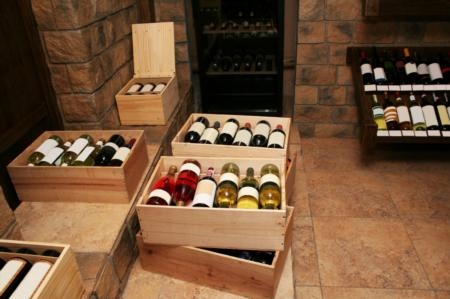
wine for sale
Borage! Borage! Borage!
A recent trip to the Mendocino Coast Botanical Gardens, Fort Bragg, yielded spectacular views of...
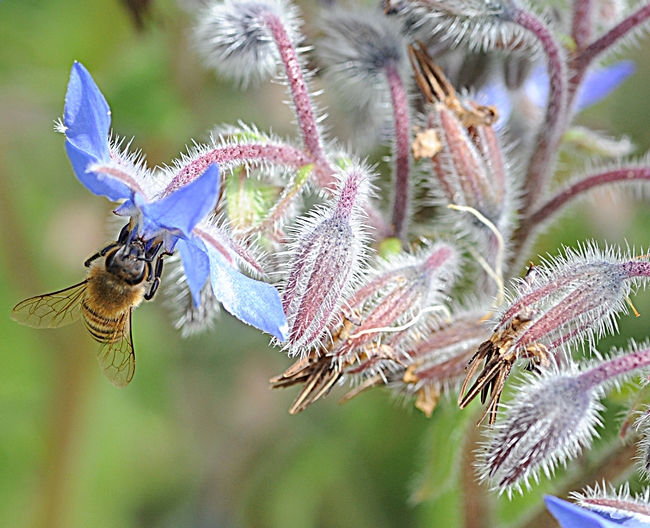
Honey bee foraging on borage. (Photo by Kathy Keatley Garvey)
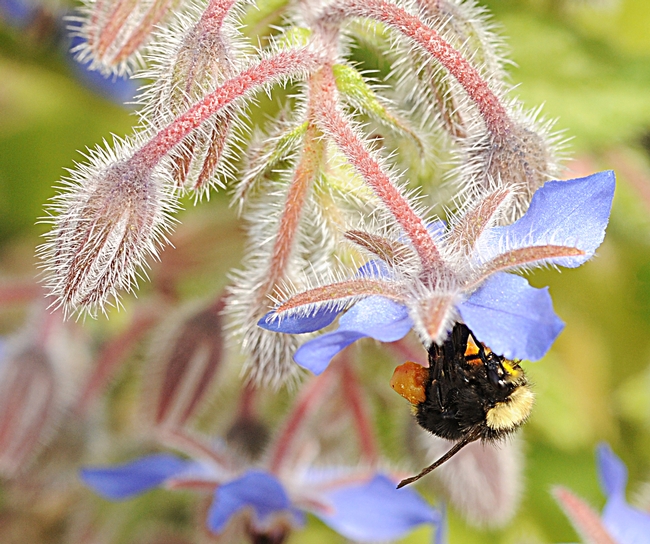
Yellow-face bumble bee (Bombus vosnesenskii) takes a liking to borage. (Photo by Kathy Keatley Garvey)
European grapevine moth found in Mendocino
As authorities collaborate on a battle plan to combat European grapevine moth, the pest has been detected in a new area.
The Santa Rosa Press Democrat reported last week that 13 moths were found in a North Ukiah chardonnay vineyard, the first evidence the pest has reached Mendocino County. The discovery of the moths means that a quarantine with a three-mile radius around the vineyard will be established.
Mendocino County Ag Commissioner Tony Linegar believes the moth was transported on winegrapes from Napa County, where infestations are high, the story said. European grapevine moth, a native of the Mediterranean region, was first detected in California's wine country last September.
Meanwhile, the Napa Valley Register reported today that USDA is forming a technical team with experts from Italy, Chile and the University of California to determine the next steps in an effort to eradicate the new pest.Napa County Ag Commissioner Dave Whitmer, speaking to the Napa County Board of Supervisors last week, outlined a control strategy that includes additional trapping, working with growers where the pest has been found, maintaining quarantine standards and doing educational outreach, according to the article, written by Mike Treleven.
Grape industry leader Jon Ruel applauded the the efforts of the ag commissioner and UC Cooperative Extension for jumping on the issue early, Treleven reported.
“Dave (Whitmer) has done a good job to get state and federal agencies involved ... for getting money and a Technical Task Force, which drew the best scientists in the world,” Ruel was quoted.
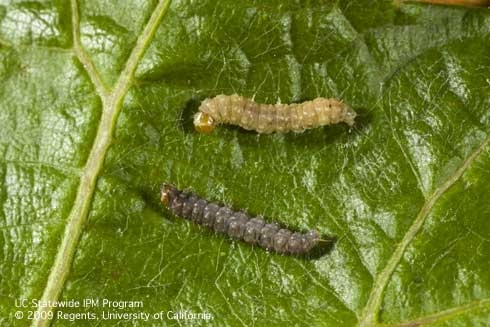
Earlier stages of EGM larvae are tan to yellow-brown (top). Later stages are brown.

